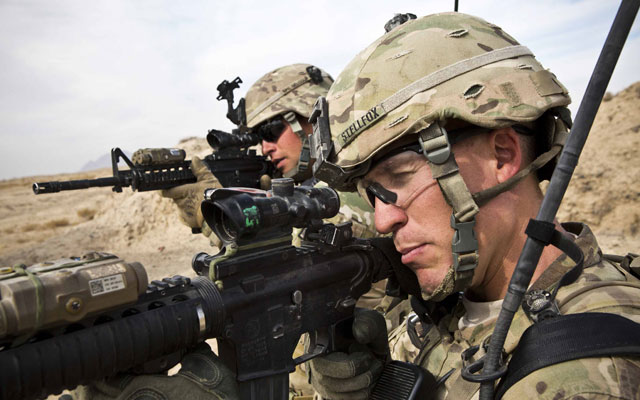Why It’s Insane To Shrink Our Military As Much As Hagel Wants To
James Carafano /
Finally, a defense secretary who would roll up his sleeves and start getting bloated Pentagon spending under control.
His name was Robert McNamara, and he and his “whiz kids” had plenty to fix. Each armed service had a different butcher’s smock because they couldn’t agree on the requirements for an appropriate apron for a military chef. The Army took longer to field a new rifle than it took the Air Force to build a bomber. The Air Force squabbled with NASA over what America needed in space. The Navy’s shipbuilding costs were through the roof.
McNamara launched an unprecedented effort to ride herd over the service acquisition cats. He wanted to chuck contracts that let companies rake in obscene profits. He wanted everything audited. There would be adult leadership and centralized decision-making, no useless duplication, and no buying weapons to fight the last war.
For almost a decade McNamara pushed relentlessly for economies and efficiencies and sharply honed requirements to ensure the weapons Washington bought matched the nation’s strategic needs. Yet, for all his efforts, schedule and cost overruns persisted, and sometimes worsened. Even more troubling, in arguably every facet of competition with the Soviet Union from conventional forces to nuclear weapons, America’s overwhelming advantage in technological superiority was all but erased.
In a timely new book Adapting to Flexible Response, 1960-1968, Defense Department historian Walter Poole argues convincingly that, having set out to deliver a more relevant, cost-effective military, McNamara delivered on neither count.
McNamara tried to modernize the military on the cheap, raiding budgets to fund the Vietnam War. He filled the Pentagon with civilian leaders who were politically loyal but lacked the skills and knowledge to oversee defense acquisition.
The “whiz kids” legacy was a rusty military that didn’t get fixed until Ronald Reagan became president. Today, after a decade of war and two decades of lackluster attention to modernizing the military, America has now pretty much exhausted the Reagan investment.
Last week, Secretary of Defense Chuck Hagel announced his budget for ensuring the military has enough capabilities and readiness to meet the challenges of the future. It looks like a very tired retread of McNamara, with a dose of Jimmy Carter-esque indifference to reality added in.
The U.S. emerged from World War II as a global power with global financial interests and global security responsibilities. The No. 1 way to protect those interests was to prevent global war from ever happening again. That meant having the capability to handle problems in the East and West at the same time, thereby assuring that a regional conflict would never spin out of control.
And, since we were facing off against the Soviet Union, we had to worry about Moscow instigating a third problem elsewhere. Washington’s strategic response was to size forces sufficient to fight and win “two and a half” wars. When the Red Menace collapsed, that requirement was sensibly dropped to being able to respond to two major regional contingencies.
Now, Hagel says, all the U.S. can do is “maybe” one and “maybe” a little more. And, under Hagel, modernizing the military looks more anemic than ever — leaving future security in even graver doubt.
Yet, the secretary assures us this represents good stewardship of our armed forces.
That is hogwash. With a rising China, a restive Russia, a Middle East in meltdown, al Qaeda alive and Iran and North Korea as rogue as ever, he can’t seriously suggest the U.S. will be just fine with a smaller, less capable military. It is like saying we can responsibly cancel our fire insurance, now that there are so many arsonists in the neighborhood.
JAMES JAY CARAFANO, a Washington Examiner columnist, is vice president for defense and foreign policy studies at the Heritage Foundation.

